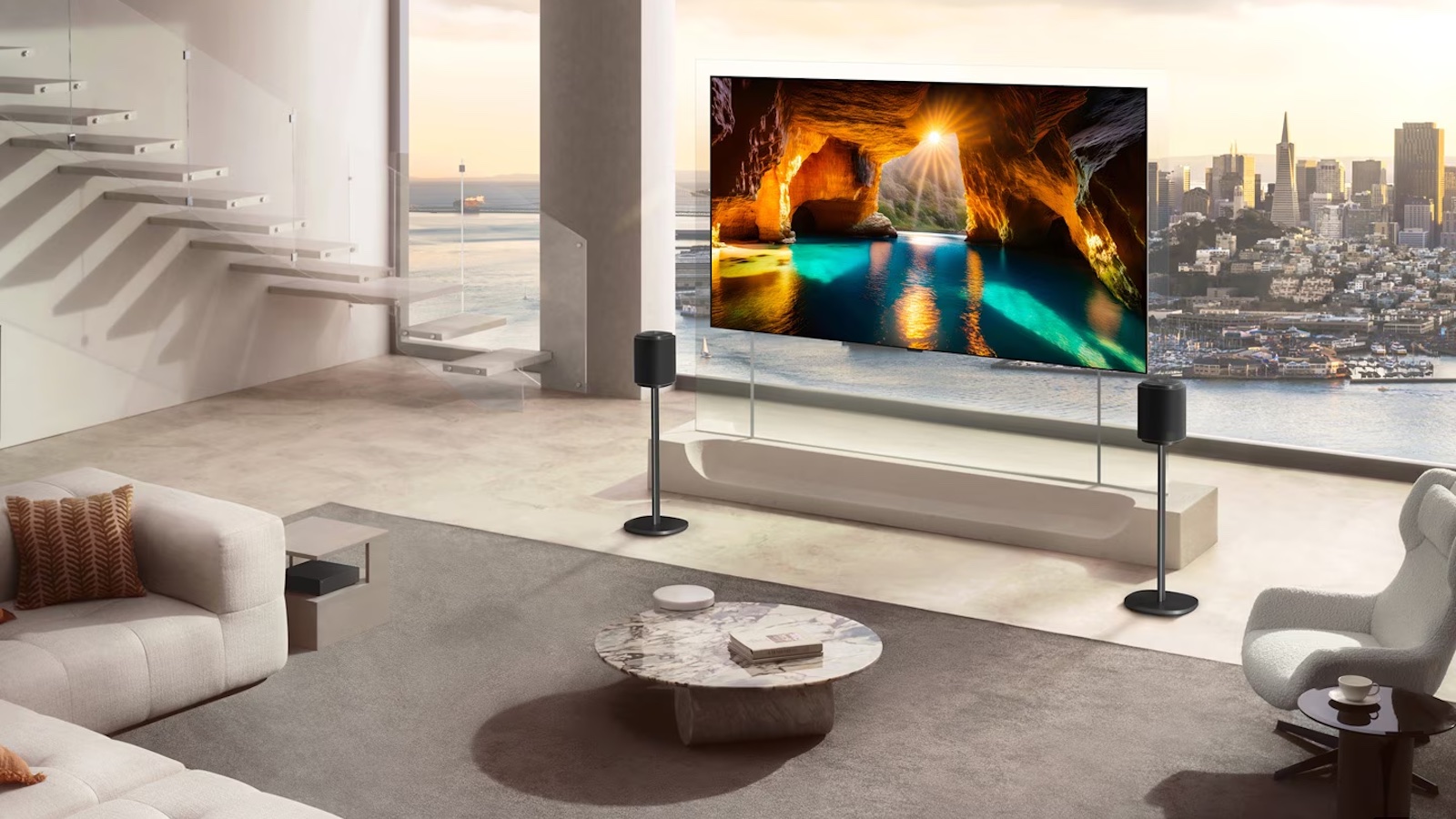What Hi-Fi? Verdict
It’s a pricey proposition, but the A90J justifies its premium positioning with a superlative picture and sound performance
Pros
- +
Outstanding picture quality
- +
Superb motion handling
- +
Impressive sound
Cons
- -
No VRR (yet), buggy 4K@120Hz
- -
Missing UK catch-up apps
- -
Expensive
Why you can trust What Hi-Fi?
While Sony’s OLEDs are highly regarded, it’s typically hard to justify buying one over a rival LG. Historically, the Sony has a more authentic picture and better sound but is also a step behind on features and usability – and at least a level or two more expensive.
But what if Sony could produce a TV with most of those previously missing features, a more satisfying user experience, and a unique high-quality movie streaming app, all while raising the picture and sound quality to even greater heights? Could you justify buying that TV over a rival LG? We’re about to find out because Sony has produced that TV, the XR-55A90J.
Pricing
Sony apparently sees no need to abandon the premium pricing of its Master Series TVs: the launch price of the XR-55A90J is £2699 ($2800). That makes it £1000 ($1000) more expensive than the 55-inch version of the LG C1, and £700 ($600) pricier than the LG G1, with which the Sony may or may not share a panel.
There’s no 48-inch version of A90J, but you can go bigger than the 55-inch model we’ve reviewed here: the 65-inch XR-65A90J will set you back £3499 ($3800) and the huge, 83-inch XR-83A90J costs £6999 ($8000).
Build

Thin, black, flush bezels are the norm for modern OLED TVs, which means most look alike when wall-mounted. The A90J has a brand logo, something that’s becoming increasingly rare, but it’s positioned on the bottom-left and far from ostentatious.
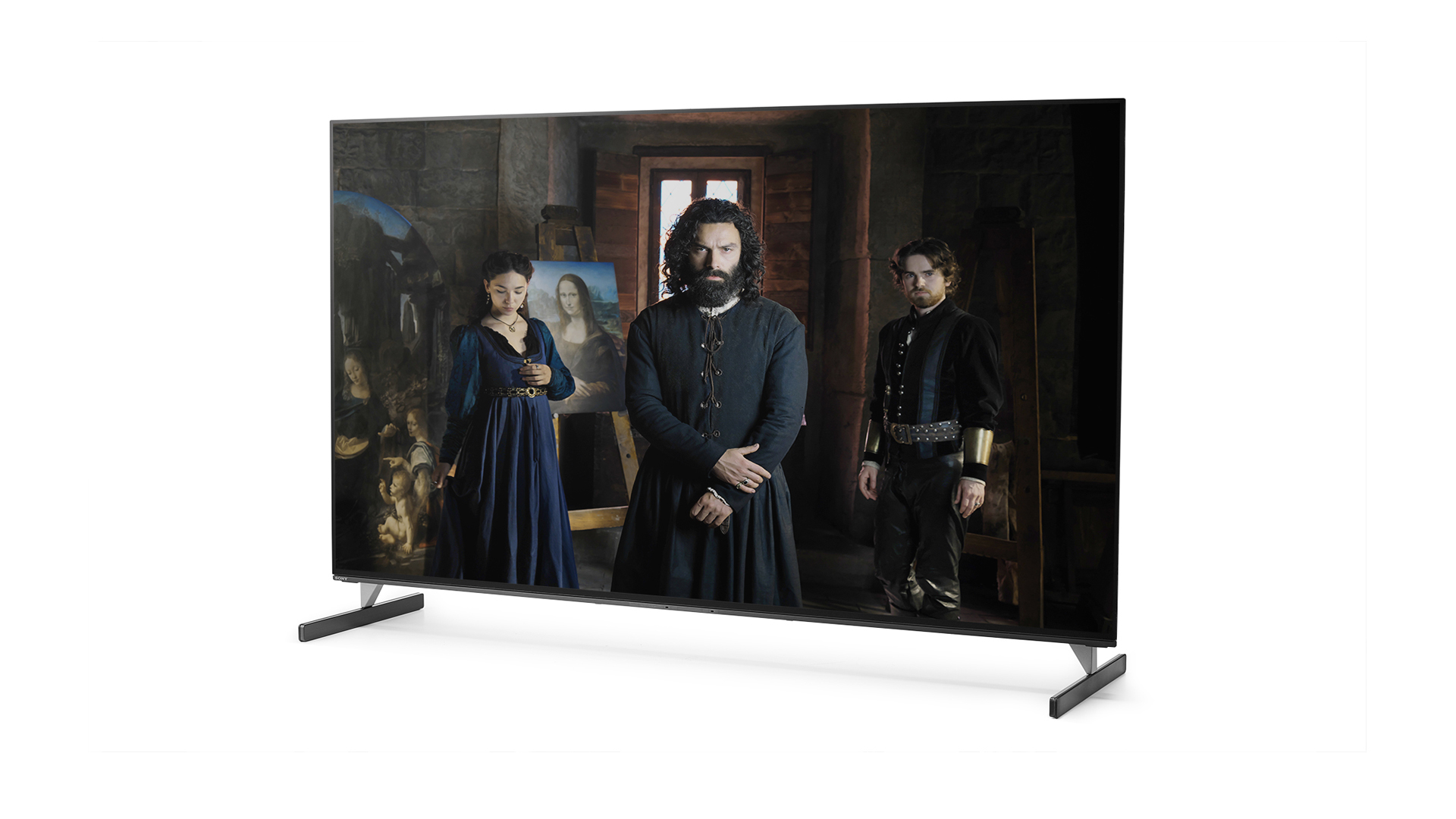
Screen type OLED
Resolution 4K
Operating system Google TV
HDR formats HDR10, Dolby Vision, HLG
HDMI x4 (HDMI 2.1 x2)
4K@120Hz Yes
VRR No
ALLM Yes
ARC/eARC eARC
Optical out Yes
The set’s feet are quite the talking point. In the default position, they extend beyond the left and right edges of the set, leaving almost no gap between the bottom of the TV and the furniture upon which it’s standing. It’s a highly unusual, low-profile look, but it means your rack will need to be at least 128cm (51 inches) wide.
Alternatively, you can swap the feet over and set the TV in its soundbar position. This gives the set a footprint of 115cm (45 inches) in width and creates a gap of about 7cm (2.8 inches) between its bottom edge and the surface below – an ideal gap in which to place an average-sized soundbar. It’s worth noting that there are no cable channels in the Sony’s feet, so if you opt for the TV’s soundbar position but don’t fill the gap, the cables dangling out of the TV will be visible.
The latest hi-fi, home cinema and tech news, reviews, buying advice and deals, direct to your inbox.
Viewed in profile, most OLEDs are a combination of an extremely thin panel section and much thicker enclosure for the sound system, processing hardware and connections, and the Sony A90J doesn’t deviate from that template. Its panel section is around 6mm (0.2 inches) thick but, around 11cm (4 inches) from the top edge, that enclosure juts out, covering the rest of the panel’s rear. This section is 4.1cm (1.6 inches) thick. For reference, the LG C1 is 4.7cm (1.8 inches) at its thickest point, while the picture frame-like LG G1 is a uniform 2cm (0.8 inches).
If you’re one of those rare people who doesn’t place their TV on or close to a wall, you might be pleased to learn that the A90J has a neat and stylish rear end, with plastic panels provided to cover the various inputs and outputs and a pleasingly uniform ridge pattern created when they’re in place.
Features
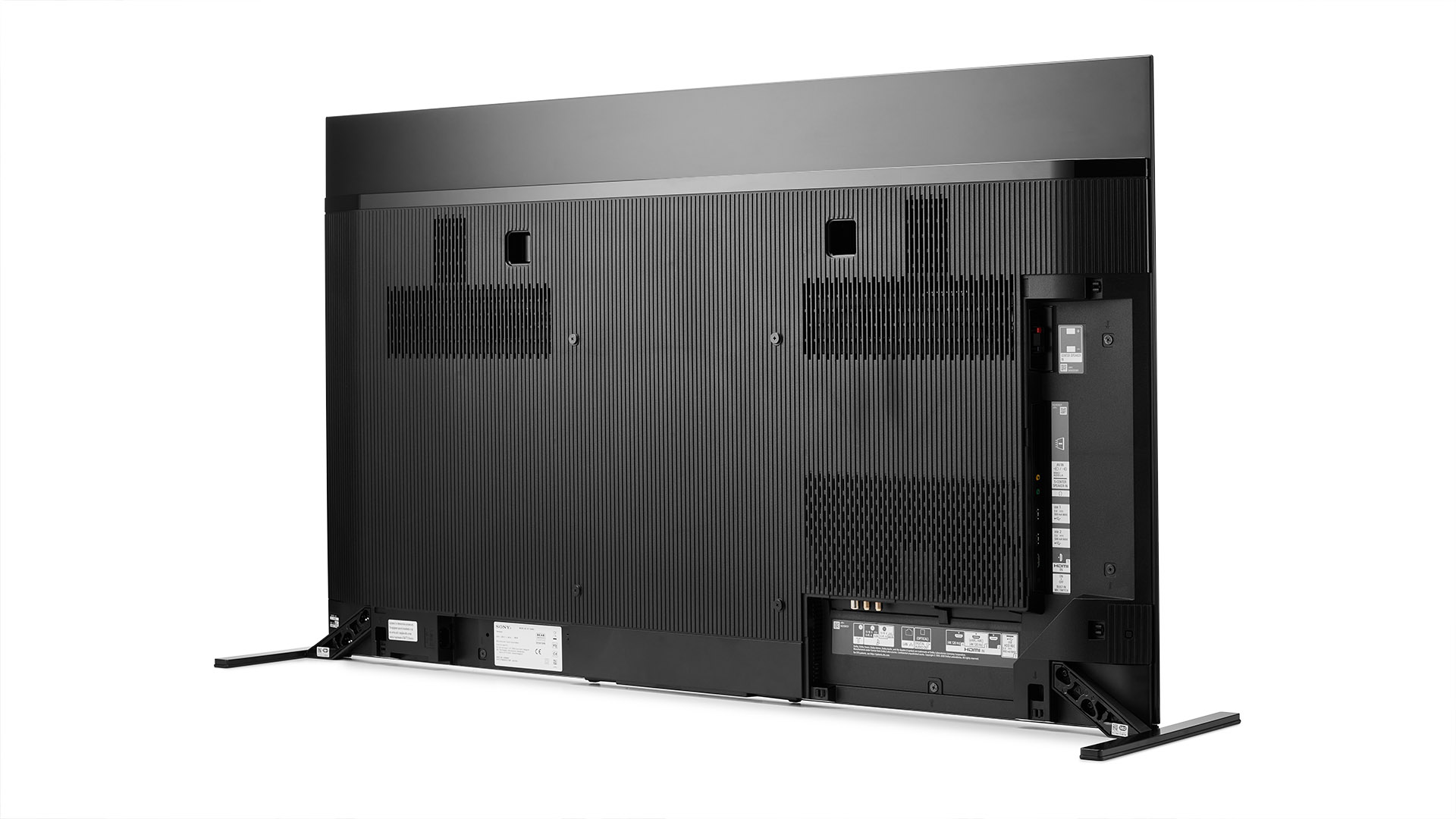
Those inputs and outputs seem largely typical at first glance, with four HDMIs, three USBs, aerial and satellite sockets, and ethernet. There’s also a headphone socket, which is gradually becoming less common, and a rarer-still composite video input (in case you want to connect a vintage VCR to your flagship 2021 OLED TV). Most unusually, it also has a pair of speaker terminals that allow the TV to take the place of the centre speaker in a surround sound system.
The HDMI sockets are where the real action is, though. Sony has long been rather behind when it comes to HDMI technology but has sought to close the gap by adding 48gbps HDMI 2.1s to the A90J. It’s a step in the right direction, but only two of the four HDMIs are 2.1-spec. That might not seem a big deal – after all, who has more than two HDMI 2.1 sources? – but one of those 2.1 sockets also handles eARC/ARC. In other words, if you need to use eARC/ARC to get sound from the TV to an external sound system, you’re going to have just one HDMI 2.1 socket left.
Even if you have just one HDMI 2.1 source now (an Xbox Series X or PlayStation 5, for example), it’s easy to imagine that you might end up with another within the time you might expect to own the TV. It may be a minor issue, but it’s one you don’t have to worry about with LG’s OLEDs, most of which have had four HDMI 2.1 connections since way back in 2019.
The other HDMI-related disappointment is that the Sony A90J doesn’t support VRR out of the box. Sony claims it is waiting for an official specification to be released and is keen to point out that the PS5 doesn’t yet support VRR either. However, neither issue has put off LG or Samsung, which offer broad VRR support that Xbox and PC gamers can take advantage of right now. Sony has a track record of promising feature updates and not delivering them, at least not in a timely fashion (last year’s XH90 TVs are still waiting for their own VRR update, for example), so we’d be a little wary of taking the company at its word. Even if VRR is added at a later date, there's no guarantee that it will be a full and flawless implementation.
The good news is that 4K@120Hz is supported out of the box, although its implementation certainly isn't flawless, creating issues with ALLM, which works fine at lower refresh rates, and creating audio dropouts when Dolby Atmos is also enabled on an Xbox Series X.
It’s also worth noting that to enable 4K@120Hz, Dolby Vision is disabled, so you won’t get Dolby Vision from the Xbox Series X’s built-in apps unless you first switch the TV from its ‘Enhanced Format’ mode (which enables 4K@120Hz) to its ‘Enhanced Format (Dolby Vision)’ mode. You then have to switch back if you want to play a game in 4K@120Hz. With an LG OLED, you don’t have to jump through any of these hoops – it simply works.
It’s worth remembering that the A90J’s HDMI features and foibles are only of serious concern to hardcore gamers on next-gen consoles. Most buyers will be more concerned about its performance with movies and TV shows, so it’s little wonder that this is where Sony continues to focus most of its efforts.
At the core of the TV is Sony’s new Cognitive Processor XR, which combines the AI abilities of its X1 predecessor with a system that Sony calls cognitive intelligence. While AI analyses picture and sound signals and uses data based on machine learning, cognitive intelligence aims to add a more human perspective to identify and enhance AV performance and deliver an experience in line with how humans see and hear the world.
This world-first TV picture processing, according to Sony, begins with a scene detection stage to identify and enhance the main focal points and, ultimately, adds a greater sense of depth to the image. The XR processor looks at multiple zones and other elements (colour, contrast, texture, depth, detail, etc) of each frame and performs a cross-analysis to work out the most important areas.
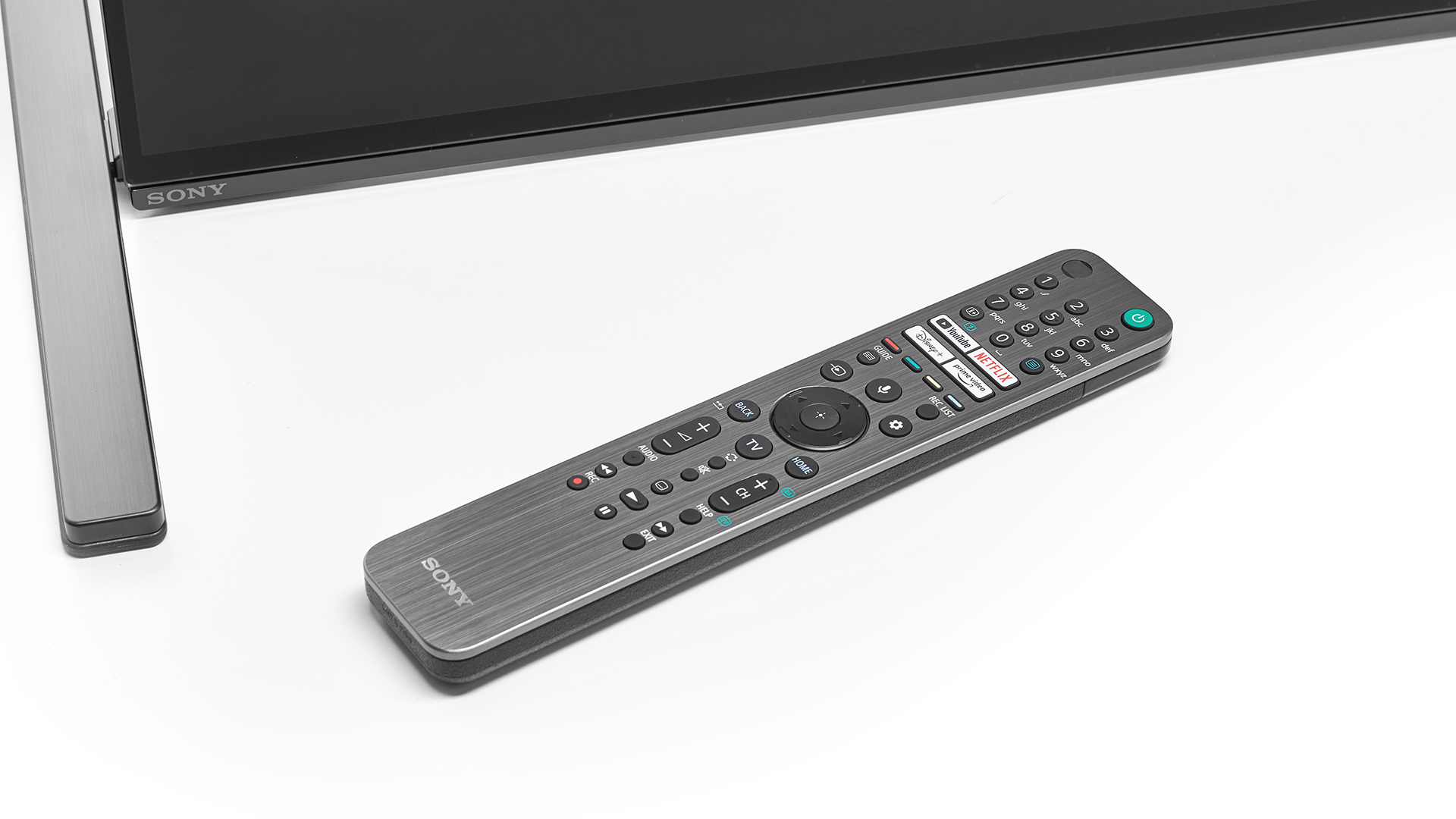
Improvements have been made to the OLED panel, too. Sony has introduced an aluminium sheet that essentially acts as a heatsink, allowing for increased brightness and, though Sony hasn’t confirmed it, it’s believed that the A90J uses the same next-gen ‘OLED Evo’ panel as LG’s G1, which itself boasts higher brightness than OLED TVs before it.
On the sound front, Sony is sticking with its highly successful Acoustic Surface Audio+ technology, which involves actuators that vibrate the whole screen, creating sound from the display itself. With the A90J, the two actuators are joined by two woofers for added bass weight and depth.
The A90J is the first TV we’ve tested with Google TV built-in, and it’s a significant improvement on the Android TV operating system of previous Sony smart TVs. It’s snappy in use and you can quickly jump to a specific movie or TV show by using the top row of personalised recommendations, while the row just below that gives you direct access to all of your apps. It’s a smart and sensible layout but, at the time of writing, this top, personalised row only brings in content from Disney+, Amazon Prime Video and Apple TV, which limits its usefulness. If you use the same feature on the Chromecast with Google TV, movies and TV shows from Netflix are included in your recommendations, so why they aren't here is peculiar. The fact that Sony’s new Bravia Core streaming service also isn’t included in your top line of recommendations highlights one of the issues a TV manufacturer faces when using an operating system from a third-party provider.
We’ve already written about Bravia Core and will be reviewing it in full shortly, but this already seems a lovely perk for Sony TV buyers, thanks to the quality of the catalogue, the free streams and the picture quality. Our 100mbps connection isn’t fast enough for Bravia Core’s top-quality Pure Streams to hit their peak but, even at lower data rates, the performance is particularly strong. It would be nice if the service’s IMAX Enhanced content automatically triggered the TV’s IMAX Enhanced picture mode, though, as the TV’s other presets clearly don’t do it justice and the constant manual switching is tiresome.
In terms of the broader app offering, the Sony A90J is generally good. You get Netflix, Amazon Prime Video and Apple TV in all of their 4K, Dolby Vision and Dolby Atmos glory; Disney+ is lacking Dolby Atmos support (this appears to be a Google / Android TV issue as previous Sony and Philips sets are similarly lacking) while the YouTube app (now the home of Google Play movies and TV shows) works in 4K and HDR10; Plex and VLC make for easy playback of your stored content; and Spotify, Tidal, Amazon Music and Deezer give you plenty of options for music streaming.
UK buyers might be pleased to learn that there are native apps for both Now (previously Now TV) and BT Sport but, at the time of writing, BBC iPlayer, ITV Hub and All 4 are missing. Our understanding is that these will be added shortly, but the official line from Sony is that they “are expected to be available later in 2021”, which is slightly concerning in its vagueness. We’ll be keeping an eye on this and will update the review accordingly.
Finally, any breakdown of the A90J’s features would be remiss if it didn’t mention the new remote control, which is smart, stylish and – most excitingly – furnished with a light- and motion-activated backlight that makes individual buttons easy to find in the dark. The backlight even shines through the logos of the YouTube, Netflix, Disney+ and Prime Video shortcut buttons.
Picture
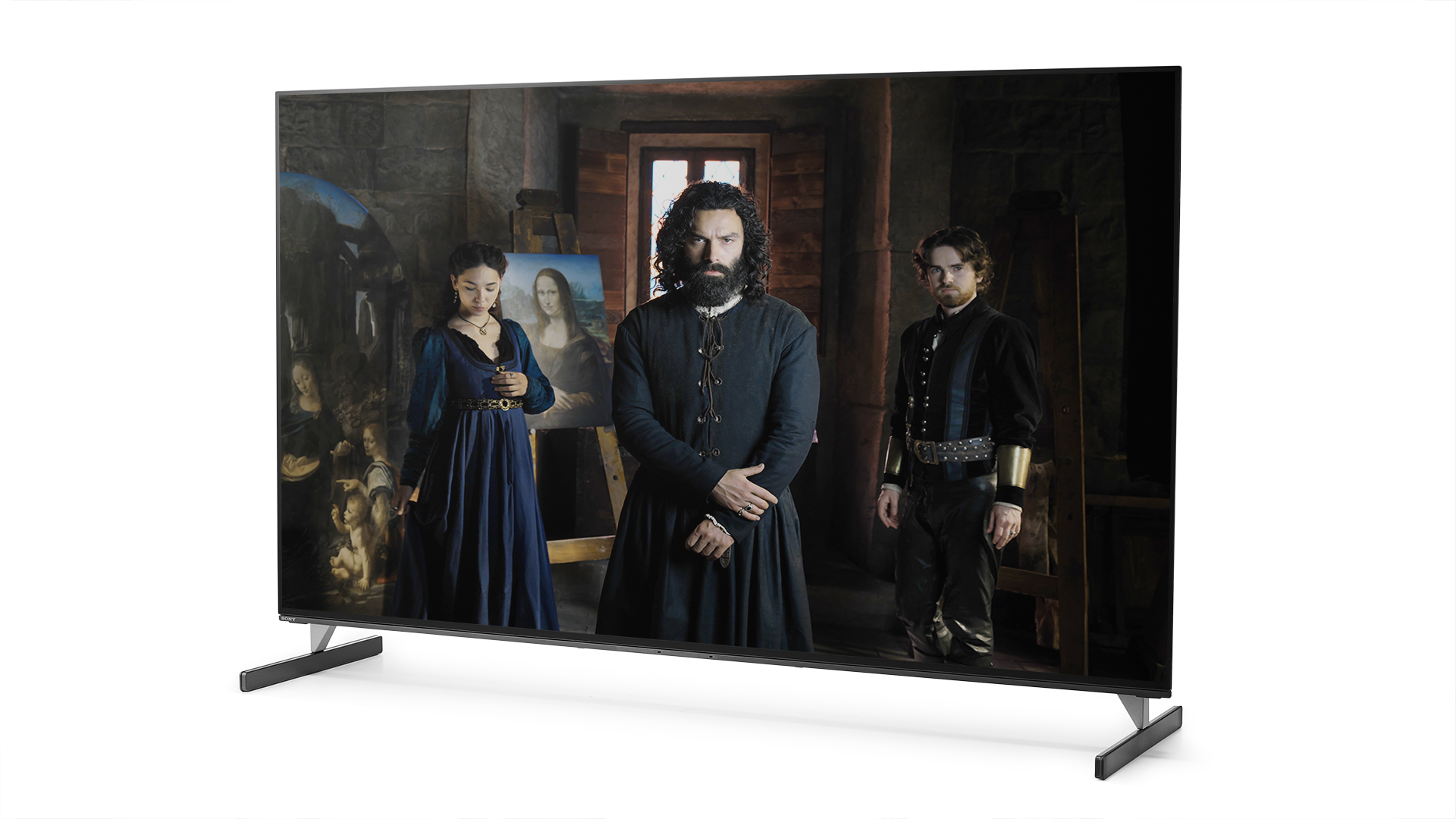
Starting with Rogue One in Dolby Vision, it quickly becomes clear that the Sony A90J is a special TV indeed. Compared even to an LG G1, the Sony’s image is considerably sharper and more detailed, beyond what we’d expect from the size discrepancy (our A90J and G1 samples are 55 inches and 65 inches respectively). Whites are crisper and purer, too, and bright highlights are more pronounced and more detailed.
As the Rogue One crew approaches Scarif, the scene is rendered with epic scale. The gateway to the planet and the ships surrounding it are crisp and three-dimensional, the sunlight reflecting off the planet’s surface is piercingly bright and each cloud is easily discerned, despite the great distance.
Switching to It, also in Dolby Vision, the A90J takes a slightly less vibrant approach to colour than its LG rivals, but it’s also subtler in terms of shading and closer to neutral. It’s sharper and more detailed, too, even revealing the texture of the paper from which Bill constructs the boat, and the brightest highlights again pop from the screen. At the other end of the contrast spectrum, the A90J digs up absolutely loads of dark detail, ensuring you miss none of the gory unpleasantness that takes place in the sewers beneath Derry.
With Blade Runner 2049 in HDR10, the Sony is exemplary, even with its out-of-the-box settings. We up the Contrast and switch the Advanced Contrast Enhancer to High to get very bright objects on black backgrounds (the text at the start of the film for example) to really pop. You can take this a step further by switching the HDR Tone Mapping to Brightness Preferred, but this can rob bright highlights of some detail, so we stick with the better-balanced Gradation Preferred.
Ultimately, what’s so impressive about the A90J’s performance is how natural and authentic it is. The image is incredibly sharp and insightful, but there’s a composure and balance to it that makes rivals look clumsy. Contrast is striking but there’s also a subtlety to the shading that few can match, and the very brightest and darkest picture elements are packed with detail that most rivals miss.
In no area is the Sony’s naturalism more obvious than its handling of motion. LG has improved its motion processing this year by adding a new Cinematic Movement setting, which is designed to reduce blur without adding artificiality, but Sony is still a clear step ahead here. There’s practically no shimmer to the tricky motion as K’s car flies into LA, or when it hurtles towards the ground later on. Vertical and horizontal pans are clean and smooth throughout, but there’s never a hint of the soap opera effect. This is probably the best motion handling that we’ve seen.
The good news continues as we drop down to the 1080p Blu-ray of Looper. The picture is sharp and detailed and the A90J avoids exaggerating the picture noise in the way some sets do. It’s brighter and punchier than we’re accustomed to, but in a way feels unforced. The picture really pops but the frequent dark scenes are also full of nuance.
The A90J is also right up there with the very best in class when it comes to upscaling standard-def, too. Watching Pointless via the YouView tuner (Freesat is also supported), the image is as clean as can be expected, given the low resolution, and there's plenty of punch to the bright lights of the studio.
Sound

Not only is the Sony A90J one of the best picture performers we’ve tested, it also sounds superb by TV standards. Because the sound genuinely comes from the screen, audio and video are tied together far more effectively than from most TVs. In Blade Runner 2049, as K (Ryan Gosling) takes his baseline test, there’s a rare directness to the delivery. At the same time, the A90J’s virtualised surround sound adds space to the presentation so that the reverberations of the room and the disembodied voice of the interrogating officer stretch beyond the confines of the set itself.
We’ve already criticised both the LG C1 and G1 for sounding a bit dull, and that’s only highlighted by the punch and dynamics of the A90J’s delivery. There’s an authentic sense of chaos and excitement to the Elvis-soundtracked fight in the casino later in Blade Runner 2049, and the effortlessly shifts from loud to quiet and back to loud again. It’s capable of delivering satisfying bass weight and depth, too, and is unflustered by the low frequencies that the soundtrack often sends its way. Best of all, that punch and dynamism don’t come at the expense of clarity or detail. Few TVs sound as natural and subtle as the A90J.
The only slight flaw in the Sony’s sound is that it can become fuzzy when pushed to very high volumes. However, the set is capable of going loud, and we can’t imagine many owners pushing it to the level where this fuzz creeps in. It could be something to bear in mind if you’re considering using the TV in place of the centre speaker in a surround sound system, but we wouldn’t rush to use the TV in that way anyway as it’s likely to have very different sonic characteristics to the rest of your speakers
It’s also worth noting that while the A90J sounds good by TV standards, we’d still recommend partnering it with a separate sound system. Unlike the vast majority of TVs, you’ll need to spend a fair amount to improve the A90J's sound significantly – a Sonos Arc at least – but it’s well worth it if you want the sound quality to match the picture.
Verdict
In performance terms, the Sony A90J is an absolute stunner. It takes OLED picture performance to new, thrilling levels while maintaining the authenticity for which Sony is justifiably renowned. It also sounds significantly better than all of the other TVs you might be considering. The user experience is better than that of any pre-2021 Sony TV, too, and Bravia Core is a genuine value-added feature.
We’re not overly concerned about the missing UK catch-up apps as they shouldn’t be missing for long, but hardcore, next-gen gamers might want to wait for the VRR update to arrive and the apparent 4K@120Hz wrinkles to be ironed out.
However, if movies and TV shows are your priority and you have the budget, we haven’t tested a better television than the Sony A90J. It’s pricey, but it’s also a clear cut above the competition.
SCORES
- Picture 5
- Sound 5
- Features 4
MORE:
Read our guide to the best OLED TVs
Read our LG OLED65G1 review
Read our LG OLED65C1 review
Read our Sony KD-48A9 review
Tom Parsons has been writing about TV, AV and hi-fi products (not to mention plenty of other 'gadgets' and even cars) for over 15 years. He began his career as What Hi-Fi?'s Staff Writer and is now the TV and AV Editor. In between, he worked as Reviews Editor and then Deputy Editor at Stuff, and over the years has had his work featured in publications such as T3, The Telegraph and Louder. He's also appeared on BBC News, BBC World Service, BBC Radio 4 and Sky Swipe. In his spare time Tom is a runner and gamer.
- Ketan BharadiaTechnical Editor

